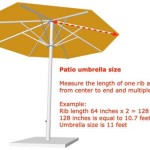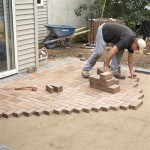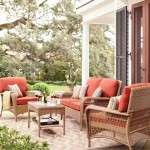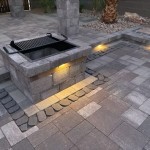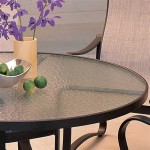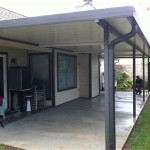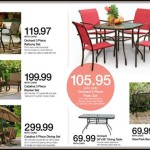```html
Patio Brick Oven Ideas: Designing the Perfect Outdoor Culinary Space
The allure of cooking outdoors, combined with the rustic charm and superior cooking capabilities of a brick oven, has made patio brick ovens increasingly popular. These ovens offer a unique culinary experience, transforming an ordinary patio into a gourmet cooking area. This article explores various patio brick oven ideas, focusing on key considerations for design, functionality, and aesthetics. Understanding these facets will facilitate the creation of an outdoor cooking space that is both practical and visually appealing.
Choosing the Right Type of Brick Oven
The first step in designing a patio brick oven is selecting the appropriate type. Brick ovens can be broadly classified into two categories: prefabricated and custom-built. Prefabricated ovens offer convenience and ease of installation, while custom-built ovens allow for greater design flexibility and personalization.
Prefabricated brick ovens are typically constructed in a factory and shipped as a complete unit or in modular pieces for on-site assembly. These ovens are generally made from refractory materials like firebrick and high-temperature concrete, ensuring durability and heat retention. Advantages of prefabricated ovens include faster installation times and a more predictable cost. They are often available in a range of sizes and styles, catering to different patio sizes and aesthetic preferences. However, design options may be limited compared to custom-built ovens.
Custom-built brick ovens are constructed from scratch on the patio, using individual bricks and mortar. This approach provides unparalleled design freedom, allowing the oven to be tailored to specific dimensions, shapes, and architectural styles. Custom-built ovens can be integrated seamlessly into the existing patio design, creating a cohesive and visually harmonious outdoor space. The construction process typically involves building a solid foundation, laying the brick dome, and insulating the oven to maximize heat retention. While custom-built ovens offer greater design flexibility, they require more time, skill, and resources to construct. A skilled mason or experienced contractor is typically required to ensure proper construction and optimal performance.
Beyond prefabricated and custom-built options, there are also hybrid ovens that combine elements of both. These ovens may utilize prefabricated components, such as the oven dome, in conjunction with custom-built elements, such as the base and exterior cladding. Hybrid ovens offer a balance between cost, convenience, and design flexibility.
Designing the Patio Space Around the Oven
Once the type of brick oven has been selected, the next step is to design the patio space around it. This involves considering factors such as the size and layout of the patio, the placement of the oven, and the integration of other outdoor cooking and dining elements. The goal is to create a functional and aesthetically pleasing space that complements the brick oven and enhances the overall outdoor experience.
The size of the patio will largely dictate the size and placement of the brick oven. A small patio may only accommodate a smaller, prefabricated oven, while a larger patio can accommodate a larger, custom-built oven with ample surrounding workspace. When determining the placement of the oven, consider factors such as prevailing winds, proximity to the house, and access to utilities like gas and electricity.
The placement of the oven should also take into account the flow of traffic on the patio. Ensure that there is ample space around the oven for cooking and serving, and that the oven does not obstruct pathways or create safety hazards. A well-designed patio will incorporate the brick oven seamlessly into the overall layout, creating a cohesive and functional outdoor space.
In addition to the oven itself, consider incorporating other outdoor cooking and dining elements into the patio design. This may include a grill, a smoker, a countertop for food preparation, a sink for washing dishes, and a dining area for enjoying meals. These elements can be arranged around the brick oven to create a complete outdoor kitchen.
The overall design of the patio should reflect the architectural style of the house and the personal preferences of the homeowner. Use materials, colors, and textures that complement the brick oven and create a cohesive and visually appealing outdoor space. Consider incorporating landscaping elements, such as plants, trees, and shrubs, to enhance the aesthetic appeal of the patio and create a more inviting atmosphere.
Key Materials and Construction Considerations
The selection of materials and construction techniques is crucial for the durability, performance, and aesthetic appeal of a patio brick oven. Choosing high-quality materials and employing proper construction methods will ensure that the oven operates efficiently and withstands the elements for years to come.
Firebrick is the primary material used in the construction of the oven dome and cooking surface. Firebrick is a type of refractory brick that is designed to withstand high temperatures without cracking or deteriorating. It is essential to use high-quality firebrick that is specifically designed for oven construction. The type of mortar used to bond the firebricks together is also critical. Refractory mortar, also known as fireclay mortar, is specially formulated to withstand high temperatures and prevent cracking. Avoid using standard masonry mortar, as it will not be able to withstand the heat generated by the oven.
The foundation for the brick oven should be solid and level to prevent settling and cracking. A concrete slab is typically used as the foundation, reinforced with steel rebar for added strength. The foundation should be thick enough to support the weight of the oven and any surrounding structures. A layer of insulation should be placed between the foundation and the oven to prevent heat loss to the ground. This can be achieved using materials such as vermiculite concrete or ceramic fiber insulation.
The exterior of the brick oven can be clad in a variety of materials to match the architectural style of the house and patio. Stone, brick, stucco, and tile are all popular options. The cladding should be applied in a way that allows for expansion and contraction of the oven due to temperature changes. Expansion joints should be incorporated into the cladding to prevent cracking. Proper insulation is essential for maximizing heat retention and improving the efficiency of the brick oven. Insulation can be applied to the exterior of the oven dome using materials such as ceramic fiber blankets or vermiculite concrete. A layer of stucco or other weather-resistant material should be applied over the insulation to protect it from the elements.
The chimney for the brick oven should be properly sized and constructed to ensure proper ventilation and prevent smoke from entering the patio area. The chimney should extend above the roofline to create sufficient draft. A chimney cap should be installed to prevent rain and debris from entering the chimney. The overall construction should adhere to local building codes and regulations to ensure safety and compliance.
Beyond the oven itself, consider the materials used for the surrounding patio area. Pavers, flagstone, and concrete are all popular choices for patio surfaces. Choose materials that are durable, weather-resistant, and slip-resistant. The patio surface should be properly sloped to allow for drainage. Consider using permeable paving materials to reduce runoff and improve water management.
Lighting is also a crucial consideration for a patio brick oven. Adequate lighting will allow for safe and enjoyable cooking and dining in the evening. Install a combination of ambient lighting, task lighting, and accent lighting to create a well-lit and inviting outdoor space. String lights, lanterns, and spotlights can be used to create a warm and inviting atmosphere. The lighting should be energy-efficient and weather-resistant.
Integrating landscaping into the patio design can enhance the aesthetic appeal of the space and create a more inviting atmosphere. Plant trees, shrubs, and flowers around the patio to provide shade, privacy, and visual interest. Consider creating a herb garden near the brick oven for easy access to fresh herbs for cooking. Choose plants that are well-suited to the local climate and soil conditions.
By carefully considering these materials and construction techniques, it is possible to create a patio brick oven that is both functional and aesthetically pleasing. A well-built brick oven will provide years of enjoyment and become a focal point of the outdoor living space.
```
Wood Fired Oven Ideas Garden Inspiration Fuego

Outdoor Oven Fireplace Options And Ideas

20 Design Ideas For Your Outdoor Wood Fired Oven Kit Forno Bravo Authentic Ovens

43 Outdoor Kitchen Ideas With A Wood Fired Oven Forno Bravo Authentic Ovens

10 Amazing Diy Oven Ideas And 3 You Can Purchase Easily Outdoor Kitchen Brick

Outdoor Oven Landscaping Network

Outdoor Kitchen Designs Featuring Ovens Fireplaces And Other Cool Accessories

Wood Fired Oven Ideas Garden Inspiration Fuego

Outdoor Brick Oven Archives Disabatino Landscaping

Diy Outdoor Oven Ideas Projects Instructions

